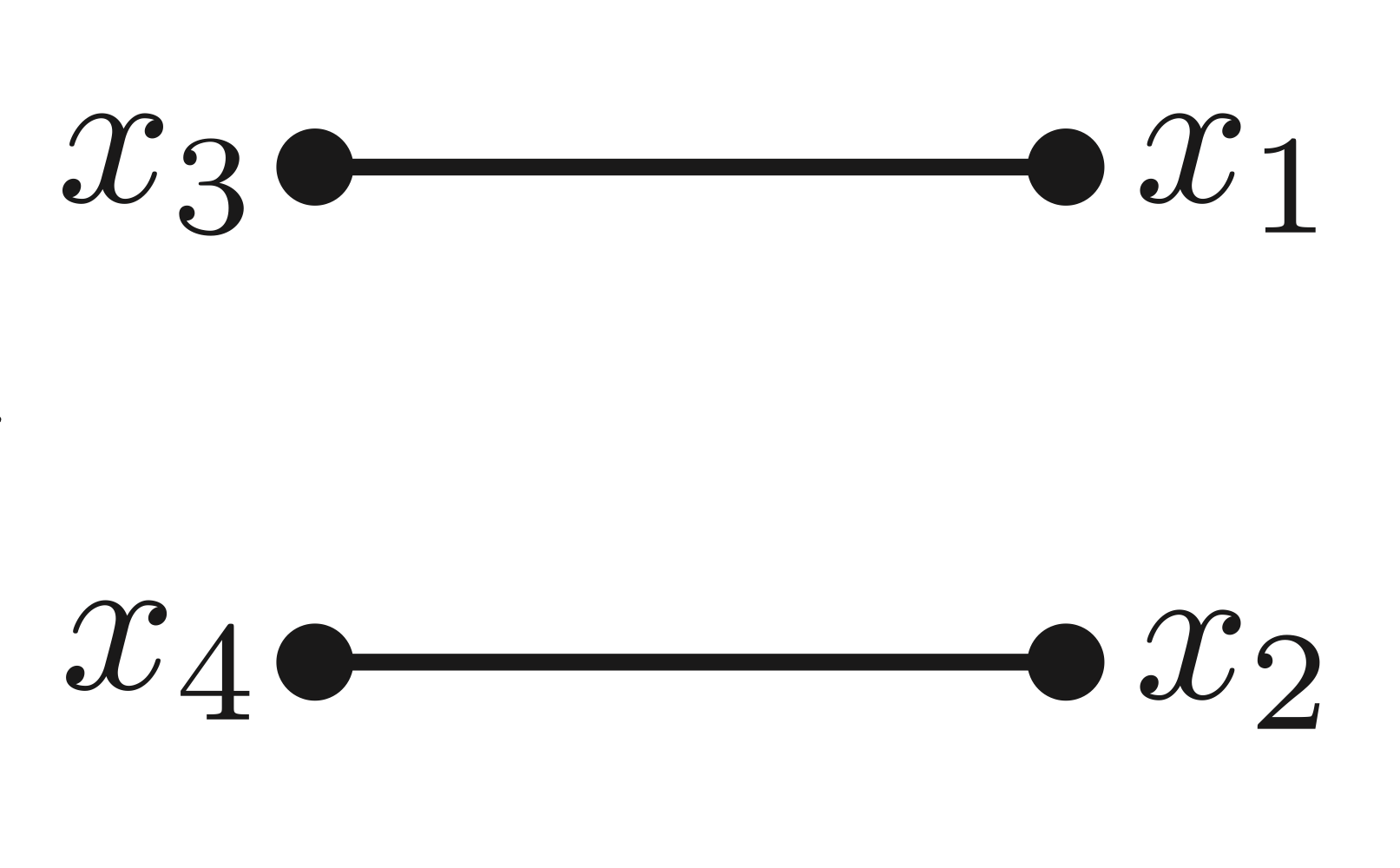Many sources, e.g. these questions (Proof of Connected Diagrams, Most general Feynman diagram) say that the amplitude for a disconnected Feynman diagram is given by $$D = \prod_{i}\frac{1}{n_i!}{C_i}^{n_i}$$ where $C_i^{n_i}$ is the amplitude for a component connected diagram, and $n_i$ is the number of identical copies of this diagram.
However, we know that the amplitude of the following Feynman diagram is $$-\Delta(x_1-x_2)\Delta(x_3-x_4)$$ without an extra factor of $\frac{1}{2!}$ (and we can check by calculating the symmetry factor of this diagram directly).
Why does this diagram not have this extra factor. It is technically the disconnected composition of 2 identical Feynman diagrams after all.
I know technically these lines aren't completely indisintuishable because they are connected to different external points. But wouldn't this be the case essentially everytime we want to use the above rule? (except for adding trivial vacuum diagrams which obviously aren't connected to external points, but which we know cancel anyway)

